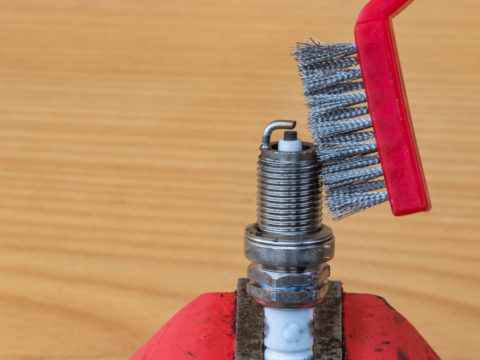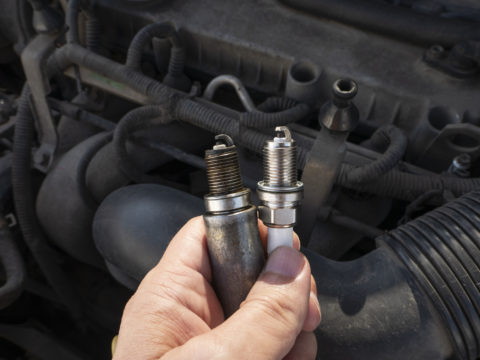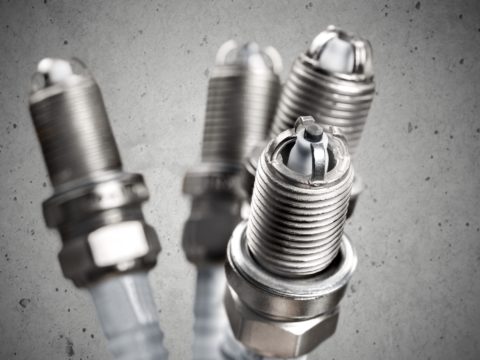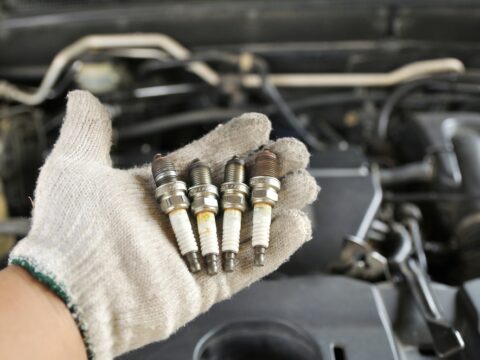A distributor is a component you’ll typically find in older vehicles. It’s a part that plays a crucial role during ignition since it distributes current from the ignition coil to the engine’s spark plugs.
A faulty or failing distributor means that the engine’s spark plugs might not ignite the fuel mixture as it enters the engine. Bad distributor symptoms can translate into a car not starting, but there are other symptoms you should know about.
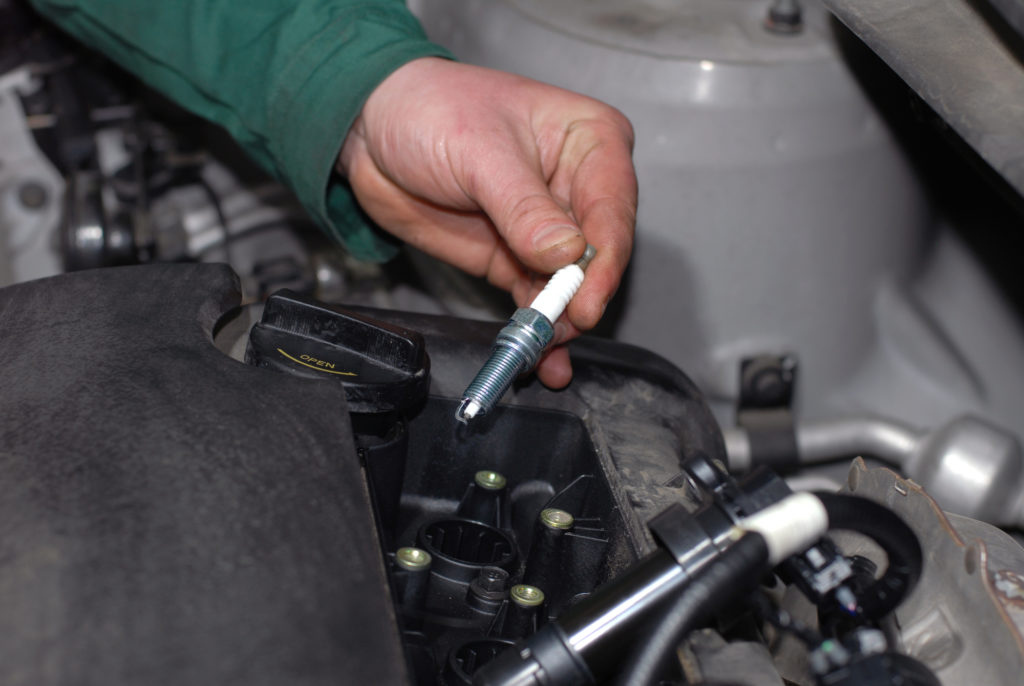
Contents
How can you tell if your distributor is bad?
The distributor is a crucial component of the ignition system. A bad distributor can cause several issues with your vehicle.
1) Your car won’t start
A precise sequence of events needs to happen for a car to start. When you turn the key in the ignition, the battery delivers current to the engine. The engine can then start spinning and draw air and fuel. As the fuel mix enters the engine, the spark plugs use electrical current to burn the fuel mix and start the combustion reaction that allows your car to move.
If the distributor is not working, the spark plugs won’t receive the electrical current needed to ignite the fuel mix.
However, other faulty components can cause issues with starting your car, including the fuel pump, ignition switch, start, fuel injectors, alternator, spark plugs, and more. You should rule out other possibilities before assuming you need a new distributor.
2) Your engine keeps misfiring or backfiring
An engine misfires when fuel doesn’t combust in one of the cylinders. A misfire usually feels like a jerking motion. It will typically happen when starting, idling, or accelerating.
Backfiring is a similar issue. Backfiring happens when unburned fuel exits an engine cylinder and ignites when it comes in contact with the next spark plug. Backfiring can cause your vehicle to stall.
3) Your car is shaking
Shaking can be a symptom of many different issues with your vehicle, especially issues with wheels and tires. However, shaking is one of the most common bad distributor symptoms since a bad distributor can affect how the distributor rotor spins. The shaking can also come from the engine that isn’t firing.
4) Your check engine light comes on
The check engine light is an indicator that lights up on your dashboard when the internal computer detects an issue with the engine. One of the things the computer monitors is the firing cycle.
A bad distributor that is causing issues with fuel ignition in the engine will likely cause your check engine light to come on.
5) You hear a high-pitched noise coming from under the hood
Noises are one of the bad distributor symptoms to watch out for. You might hear popping noises when your engine misfires or backfires, but a bad distributor can also cause a high-pitched squealing noise.
You’ll likely hear this noise if debris and grease residues are clogging the distributor and preventing the bearings from rotating.
6) You failed your last emissions test
Because a bad distributor can affect the way the engine cylinders fire, you can end up with unburned fuel leaving the engine. As a result, it’s possible to fail your state’s emissions test if you have a bad distributor. However, there are many other possible reasons behind a failed emissions test.
How do you check a distributor?
If you notice any of these bad distributor symptoms, your first step should be to check the distributor. You need to confirm that your car has a distributor since not all vehicles use this component.
Here is how you can check a distributor:
- You can find the distributor in the engine compartment. This component should be next to the engine. It looks like a cylinder with wires coming out of it.
- Inspect the distributor cap for signs of damage, cracks, or corrosion. Pay attention to the firing points.
- The rotor connects the distributor cap terminals. Make sure there are no signs of damage on this part.
- Look at the condenser and contact points with the engine. Bad contact points might look burnt or show signs of corrosion.
- You can pull the plug wires off the distributor and place the tip of a screwdriver close enough to create an arc when the engine is running. Make sure you don’t touch the plug wires directly. This test will help you diagnose faulty connections in the distributor.
What causes a distributor to go bad?
Understanding the root cause behind a bad distributor can help you address a broader issue.
Carbon buildup
A common cause behind a bad distributor is a carbon buildup inside the distributor. High-voltage sparks can cause erosion and carbon buildups over time.
You might be able to see traces of carbon on the outside of the distributor or notice some cracks in the cap if there is a carbon buildup.
Corrosion
Corrosion is a common issue that can affect the electrical components of a vehicle. It happens when metallic parts come in contact with moisture.
Corrosion can also be a result of the oxidation that occurs when your car runs too hot. You can prevent oxidation by having your car serviced regularly.
Deposits or grease, oil, and other substances can also cause corrosion. In some cases, oil or fuel leaks will result in corrosion.
It can be challenging to protect your car from corrosion caused by exposure to the climate or by age, but you can protect the distributor and other key components by performing regular maintenance.
Wear and tear
Like any other component in your vehicle, your distributor goes through wear and tear. It can wear off faster than other parts due to exposure to high voltage. As a rule of thumb, you should plan on replacing the distributor and rotor every two years or so.
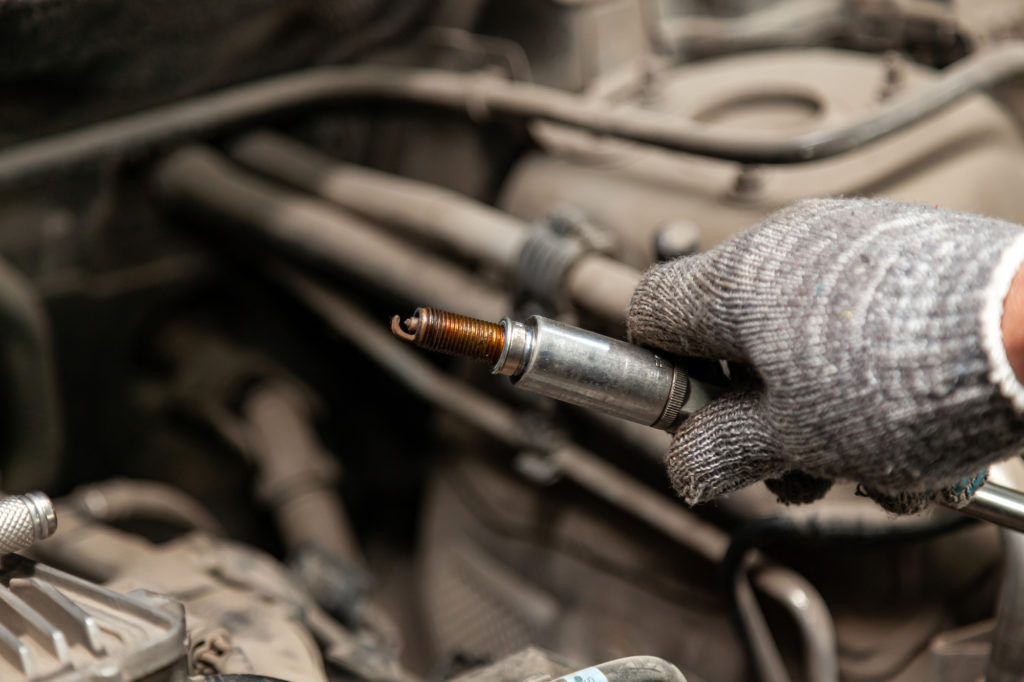
Effects of a bad distributor
A bad distributor can cause different issues with your vehicle.
Engine damage
Driving with an engine that misfires or backfires regularly can result in damage to different engine components. Misfiring and backfiring puts more wear and tear on the cylinders and pistons.
Your engine might also run hot as a result of the misfiring or backfiring. The heat can cause valves to wrap and crack and can also damage the cylinder heads.
If there is unburned fuel in the engine, lubrication will become less efficient, which will contribute to wear and tear on all the moving parts of the engine.
Catalytic converter
If a bad distributor is causing unburned fuel to exit the engine, this unburned fuel will end up in the catalytic converter.
The role of the catalytic converter is to reduce harmful emissions by burning off hydrocarbons that are the result of incomplete combustion. However, repeated exposure to unburned fuels will cause your catalytic converter to heat up, which will reduce its efficiency and lifespan.
How to fix car distributor problems
Your best option is to replace your faulty distributor. It’s best to replace the distributor cap and rotor if these components show signs of wear and tear.
You’ll have to remove the distributor cap, disconnect the wire plugs, and remove the faulty distributor.
You can then install the new distributor and connect the wires to the different engine spark plugs. You’ll also have to connect a wire to the ignition coil.
Once you have the new distributor in place, you’ll have to set its timing to match the specifications of your engine.
Replacing a distributor can be complex, which is why it’s best to take your car to a mechanic.
Can you drive with a bad distributor?
You shouldn’t drive with a bad distributor. A faulty distributor can cause your engine to misfire and stall, which can be unsafe if it happens in the middle of traffic.
A bad distributor can also damage other components in the engine compartment and cause your catalytic converter to run hot. Replacing engine components or getting a new catalytic converter can be expensive repairs, which is why you should avoid driving with a bad distributor.

